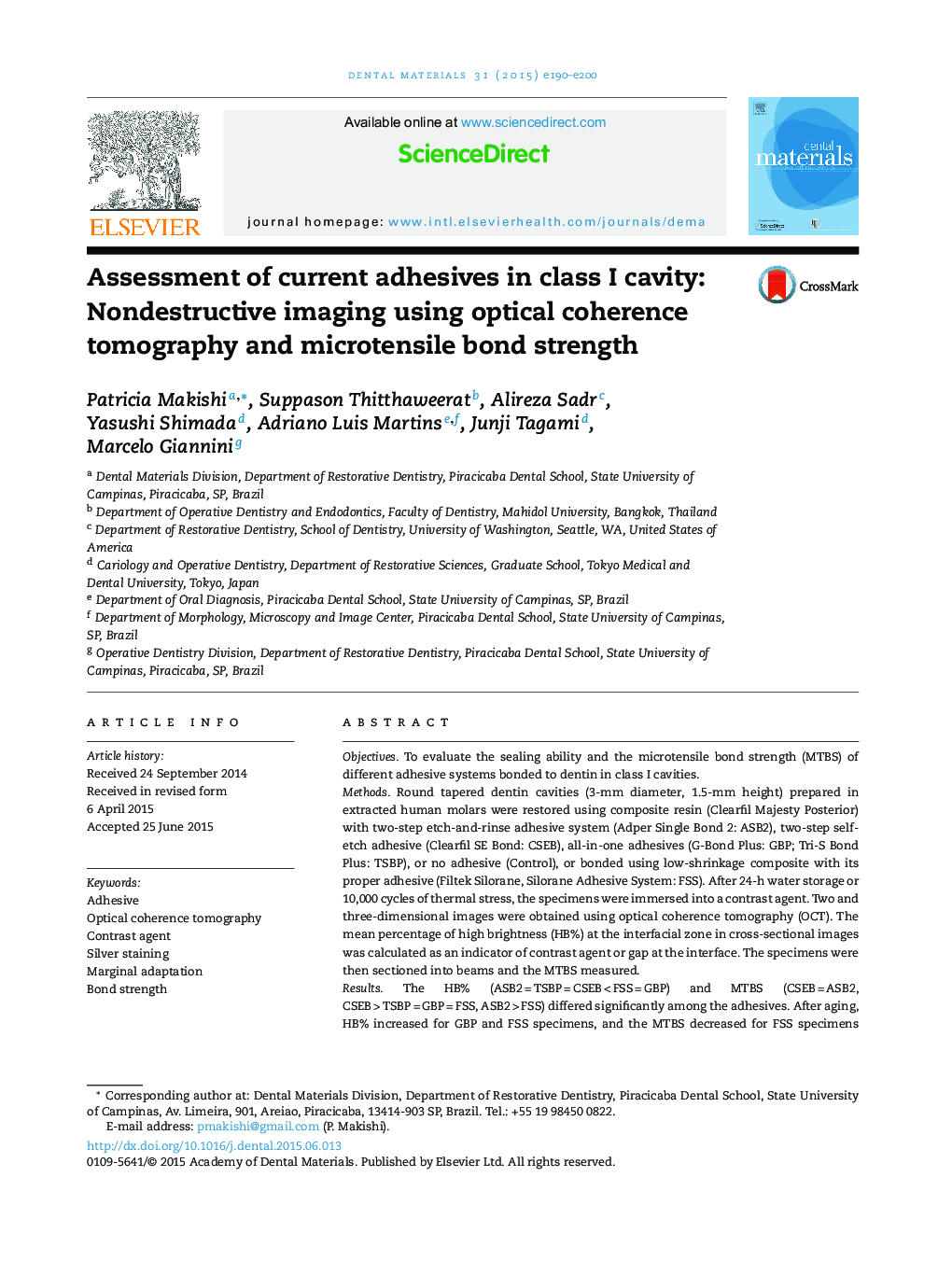| Article ID | Journal | Published Year | Pages | File Type |
|---|---|---|---|---|
| 1420602 | Dental Materials | 2015 | 11 Pages |
•Sealing performance was measured in five adhesives by optical coherence tomography.•Sealing and bond strength performance within individual specimens were correlated.•Interfacial defects increased after thermal aging.•Increased interfacial defects tended to decrease the bond strength.•Two- and three-dimensional images were useful in assessing bonding performance.
ObjectivesTo evaluate the sealing ability and the microtensile bond strength (MTBS) of different adhesive systems bonded to dentin in class I cavities.MethodsRound tapered dentin cavities (3-mm diameter, 1.5-mm height) prepared in extracted human molars were restored using composite resin (Clearfil Majesty Posterior) with two-step etch-and-rinse adhesive system (Adper Single Bond 2: ASB2), two-step self-etch adhesive (Clearfil SE Bond: CSEB), all-in-one adhesives (G-Bond Plus: GBP; Tri-S Bond Plus: TSBP), or no adhesive (Control), or bonded using low-shrinkage composite with its proper adhesive (Filtek Silorane, Silorane Adhesive System: FSS). After 24-h water storage or 10,000 cycles of thermal stress, the specimens were immersed into a contrast agent. Two and three-dimensional images were obtained using optical coherence tomography (OCT). The mean percentage of high brightness (HB%) at the interfacial zone in cross-sectional images was calculated as an indicator of contrast agent or gap at the interface. The specimens were then sectioned into beams and the MTBS measured.ResultsThe HB% (ASB2 = TSBP = CSEB < FSS = GBP) and MTBS (CSEB = ASB2, CSEB > TSBP = GBP = FSS, ASB2 > FSS) differed significantly among the adhesives. After aging, HB% increased for GBP and FSS specimens, and the MTBS decreased for FSS specimens (ANOVA, Tukey's post hoc, p < 0.05). The HB% and MTBS were significantly and negatively correlated (p = 0.002). Confocal laser scanning and scanning electron micrographs confirmed contrast agent infiltration within the gap.SignificanceThere was a significant correlation between sealing performance and bond strength of the adhesives in the whole cavity. After aging, the two-step systems showed equal or superior performance to the all-in-one and Silorane systems.
